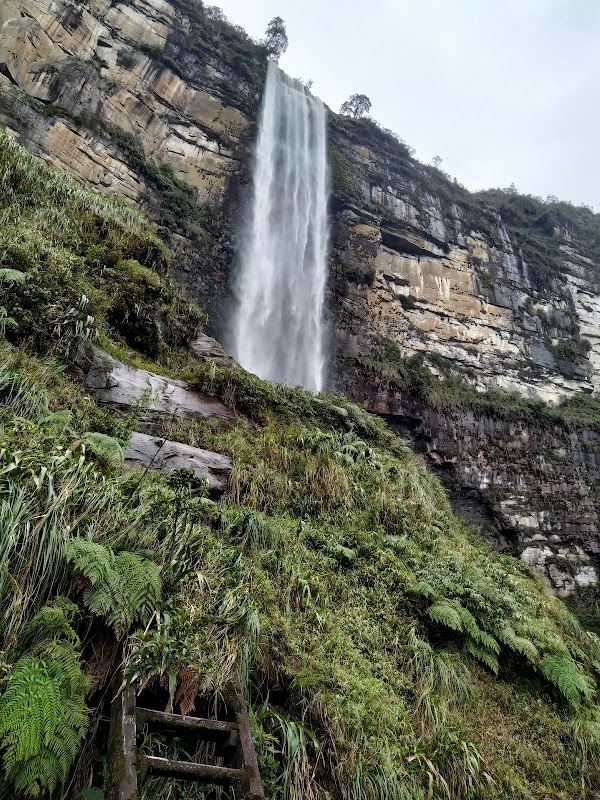Embracing The Wild: The Raymillacta Festival Experience In Chachapoyas, Amazonas
The Raymillacta Festival in Chachapoyas, Amazonas, offers an immersive blend of culture, history, and rugged adventure. Discover a hike that challenges both body and soul, leading to ancient ruins and vibrant local celebrations, all set within a landscape that demands respect and rewards exploration.
Start Early for Cooler Temperatures
Begin your hike around 7 AM to avoid the midday heat and humidity that can make the trail more strenuous.
Carry Ample Hydration
Bring at least two liters of water per person to stay hydrated during the 15 km hike with 500 meters elevation gain.
Wear Sturdy, Grippy Footwear
The trail surfaces are uneven, often slippery from humidity and moss, so hiking boots with good traction are recommended.
Prepare for Rapid Weather Changes
Pack a lightweight rain jacket and insect repellent; the cloud forest environment can shift quickly from sun to rain, and bugs are active.
Embracing The Wild: The Raymillacta Festival Experience In Chachapoyas, Amazonas
Every June, the Raymillacta Festival in Chachapoyas, Amazonas, brings a fiercely alive celebration of culture, nature, and history that invites adventurers into a vivid encounter with the region's past and present. This festival doesn’t just happen in one place—it flows through the forests, climbs alongside ancient ruins, and settles over the city streets where traditions pulse with energy.
The journey often begins with a hike through rugged trails leading to the ruins of Gran Pajatén, near the village of Raymillacta. The path covers roughly 15 kilometers round trip, with an elevation gain of about 500 meters. Terrains vary from layered stone stairs of forgotten civilizations to thick, tree-lined routes where the forest challenges your steps. The currents of the nearby Utcubamba River push forward beneath your crossing bridges, daring you to move deeper into the wild heart of Amazonas.
The trail itself demands steady footwear and a moderate fitness level. Hikers encounter earth softened by humidity, slippery rocks, and occasional fallen branches—without attention to preparation, the trail quickly reminds you that the region moves to its own rhythm. Early mornings provide cool air and soft light filtering through the canopy. Midday sun can heighten the humidity, making hydration a necessity more than a suggestion.
Raymillacta Festival embraces this environment by linking indigenous music performances with storytelling sessions near fire-lit circles under sprawling ceiba trees. Watching locals don traditional garments, you'll grasp how the festival is a living conversation between the landscape and its people, where each drumbeat is the pulse of the forest itself.
For those planning their visit, aim for a start between 7 and 8 AM to make the most of daylight and cooler temperatures. Carry at least two liters of water, a wide-brimmed hat, and insect repellent. The forest respects well-prepared travelers, rewarding them with views expanding towards the cloud forests on distant peaks and rare sightings of spectacled bears or toucans.
Balancing excitement with reason, this hike and festival are accessible to most but demand respect for altitude, natural terrain, and seasonal weather patterns. The challenge isn’t to conquer the land but to engage with its character, experiencing firsthand what it means when a place remains fiercely itself. Here, nature doesn’t just serve as a backdrop; it acts as a partner in every step, sound, and celebration of Raymillacta’s enduring spirit.
Nearby Trips
All Adventures
Boat Charters
Water Activities
Adventures near Chachapoyas
Discover the unique and memorable adventures that make Chachapoyas special.
Frequently Asked Questions
How accessible is Raymillacta Festival for casual hikers?
The trail to Gran Pajatén near Raymillacta demands moderate fitness and trail experience. Casual hikers in good health can complete the hike by pacing themselves and taking breaks, especially starting early to avoid heat and humidity.
Are there guides available for the hike and festival?
Local guides are available and recommended for first-time visitors. They share insights on history, wildlife, and navigate the trail safely, enriching the experience substantially.
What wildlife might I encounter during the hike?
Spectacled bears, toucans, various monkey species, and colorful butterflies inhabit the area. Morning hikes improve chances of wildlife spotting as animals are more active before midday heat.
Is the Raymillacta Festival held every year at the same time?
Yes, the festival typically occurs in June, aligned with regional cultural calendars highlighting pre-Inca traditions and the connection to the land and ancestors.
Are there places to stay nearby for visitors?
Chachapoyas city offers several accommodations ranging from budget hostels to mid-range hotels, making it the best base for festival visitors and hikers.
What environmental practices should visitors follow?
Visitors must practice Leave No Trace principles—pack out all trash, stick to designated paths to prevent erosion, and respect local flora and fauna to preserve this heritage-rich ecosystem.
Recommended Gear
Sturdy Hiking Boots
Essential for stability on slippery and uneven forest trails.
Hydration System
A hydration pack or bottles with at least 2L capacity to prevent dehydration.
Light Rain Jacket
Lightweight waterproof gear to handle sudden rainforest showers.
Insect Repellent
Necessary for protection against mosquitoes and other biting insects in thick forest areas.
Local Insights
Hidden Gems
- "The seldom-visited viewpoints along the trail revealing distant cloud forests veiled in mist."
- "Small hidden caves used historically by Chachapoya people for ceremonies."
Wildlife
- "Spectacled bears, who patrol the higher forests quietly but watchfully."
- "The Amazonian toad, which calls near streams following rainfall."
History
"The festival honors pre-Inca Chachapoya culture, tying present communities to an ancient agricultural and spiritual legacy evident in the architecture of Gran Pajatén and nearby settlements."

